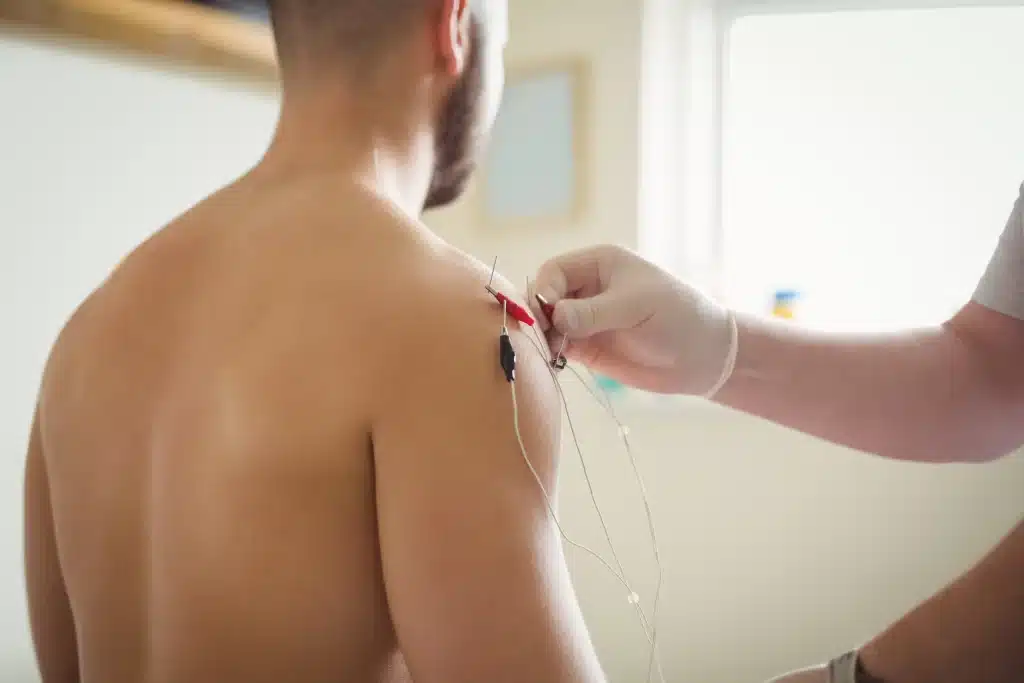Understanding trigger point injections can be challenging for healthcare providers, especially with billing and coding requirements. 20552 CPT code is frequently used for injections targeting one or two muscle groups. Familiarity with this code and its billing guidelines is essential to ensure accurate reimbursement and compliance with payer regulations.
Certain guidelines specify that billing code 20552 more than three times within 90 days for the same area may require justification. Additionally, only one code—either 20552 or 20553—can be used per day, regardless of the number of injection sites. Injections for long-term pain relief or those using saline or botanical substances may not be eligible for coverage.
Discover the Latest 2024 CPT Code Updates in Our Complete Guide [Read More Here]

Key Takeaways
- 20552 CPT code is used for injecting one or two trigger points in muscles to relieve pain.
- The national average reimbursement rate for 20552 CPT code is approximately $60-$70.
- Modifiers like Modifier 25 and Modifier 59 are important for accurately coding trigger point injection procedures.
- Some insurers may view more than three trigger point injection sessions in a 12-month period as excessive unless medical necessity is clearly documented.
- Accurate billing and coding of trigger point injections are essential to ensure fair compensation for physical therapy and pain management practices
Understanding Trigger Point Injections and Their Medical Significance
Trigger points are small muscle knots that cause myofascial pain. They limit how much you can move and do. There are two types: active and latent. Active ones hurt without a reason or with movement. Latent ones only hurt when pressed.
Things like muscle overuse, injury, and stress can cause these knots. Doctors use many treatments, like pain meds and massages. But when these don't work, trigger point injections are often the best choice.
Types of Trigger Points: Active vs. Latent
- Active trigger points cause pain without known cause or with movement.
- Latent trigger points only cause pain when directly compressed.
Common Causes and Pain Patterns
Trigger points can come from many things, like:
- Muscle overuse
- Injury
- Stress
These knots can lead to different pain patterns. Doctors need to figure out and treat these carefully.

Treatment Methods and Effectiveness
Medicines and massages can help, but trigger point injections are often the best solution. They involve injecting something into the knot to reduce pain and inflammation.
"Trigger point injections are considered medically necessary for cases where myofascial pain has persisted for more than three months, causing tenderness and/or weakness, and restricting motion and/or causing referred pain when compressed."
Other treatments like dry needling or Botox are still being studied. But, trigger point injections are known to be very effective in treating myofascial pain treatment and trigger point injection effectiveness.
20552 CPT Code: Billing Guidelines and Documentation Requirements
When it comes to trigger point injection billing, billing and documentation are key. The 20552 CPT code is for injecting medication into one or two muscle groups. Code 20553 is for three or more. Only one code is reported per day, no matter how many injections or muscle groups.
Getting the documentation right is vital for cpt 20552 documentation and getting paid. The medical record should list the muscle(s) injected, the medication, and the needle size. It should also include the agent's name, strength, and quantity. Plus, it needs medical history, physical exam results, diagnostic test findings, and a detailed procedure note.
| Key Considerations for CPT 20552 Billing | Documentation Requirements |
|---|---|
| Only one code (20552 or 20553) should be reported per day Multiple injections at the same site on the same day are coded with one unit of service Modifier 50 (bilateral) does not apply; billing is based on the number of muscles injected Modifiers 25 and 59 may be applicable to indicate a distinct procedural service | Muscle(s) injected Medication used, including name, strength, and quantity Needle size Relevant medical history, physical exam, and diagnostic test results Detailed procedure note with techniques, injection sites, and pre/post-procedural pain assessments |
Healthcare providers should review the Physician Fee Schedule and consult their local Administrative Contractor policies to stay updated on trigger point injection billing and 20552 CPT code reimbursement guidelines.

Coding Guidelines for Trigger Point Injection Procedures
When billing for trigger point injection procedures, knowing about modifiers and unit billing rules is key. The CPT 20552 billing rules help healthcare providers follow these guidelines well.
Understanding Modifier Usage (25 and 59)
Modifier 25 is used when trigger point injection is done on the same day as other services. It shows that a big, separate service was done. On the other hand, Modifier 59 is for non-service procedures on the same day, showing a different procedure was done.
Single vs. Multiple Muscle Group Injections
The number of muscles injected doesn't change the billing for trigger point injection procedures. Each procedure is billed as one unit, no matter how many muscles are treated. Providers must document the diagnosis, the muscles affected, and why trigger point injections were chosen.
Unit Billing Rules and Restrictions
Payers closely monitor pain management services, often considering more than three trigger point injection sessions within a 12-month period as unnecessary. Providers must adhere to these guidelines to ensure accurate reimbursement.
"Using the correct modifiers and following unit billing rules are essential for receiving fair compensation for trigger point injection procedures."
Clinical Documentation and Best Practices for Reimbursement
Accurate and detailed clinical documentation is key to avoid claim denials for trigger point injection procedures. Medical records should list the muscles injected, the medication, needle size, agent details, and how much was injected. The choice of CPT code depends on the muscle groups injected, not the number of injections.
It's also important to use the right ICD-10-CM code to show medical necessity.
Good documentation includes medical history, physical exams, test results, and a detailed procedure note. Practice management software can make documentation easier. It also helps communicate with doctors, follow coding rules, and manage patients better. This improves how well the practice works and patient care for trigger point injections.
Keeping accurate and detailed records supports getting paid for 20552 CPT code. It also shows that the treatment was needed and follows payer rules. This can lower the chance of claim denials and get payments on time.
FAQ
What is the CPT code for trigger point injections?
CPT code 20552 is used for trigger point injections in one or two muscle groups.
What are the billing guidelines for CPT code 20552?
Starting March 1, 2017, more than three trigger point injections in 90 days for the same spot are denied. Only one code (20552 or 20553) can be reported per day, no matter how many sites are injected.
What types of trigger point injections are considered medically necessary?
Only injections with local anesthetics and corticosteroids are medically necessary. Dry needle injections and saline or botanical substances are not covered.
What is the difference between active and latent trigger points?
Active trigger points cause pain without a known reason or with movement. Latent trigger points only cause pain when pressed directly.
What are the common causes and treatment options for trigger points?
Causes include muscle overuse, injury, and stress. Treatments include over-the-counter pain meds, massages, and trigger point injections.
How are trigger point injections performed and what do they treat?
Injections involve putting a numbing agent, steroid, or other substance into the trigger point. This reduces inflammation and muscle knots. They help manage myofascial pain when other treatments fail.
How should trigger point injections be documented and coded?
Documentation should list the muscles injected, medication, needle size, agent name, strength, and quantity. The medical record must include medical history, physical exam results, diagnostic tests, and a detailed procedure note. CPT code selection is based on the number of muscle groups injected, not the total number of injections.
How should modifiers be used for trigger point injections?
Modifier 25 is used when E/M services are provided on the same day as injections, attached to the E/M code. Modifier 59 is used for non-E/M services on the same day, indicating a separate procedure.
Are there any restrictions on the number of trigger point injection sessions?
Healthcare Providers usually sees more than three sessions in 12 months as unnecessary.





